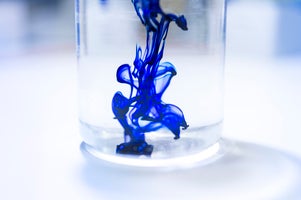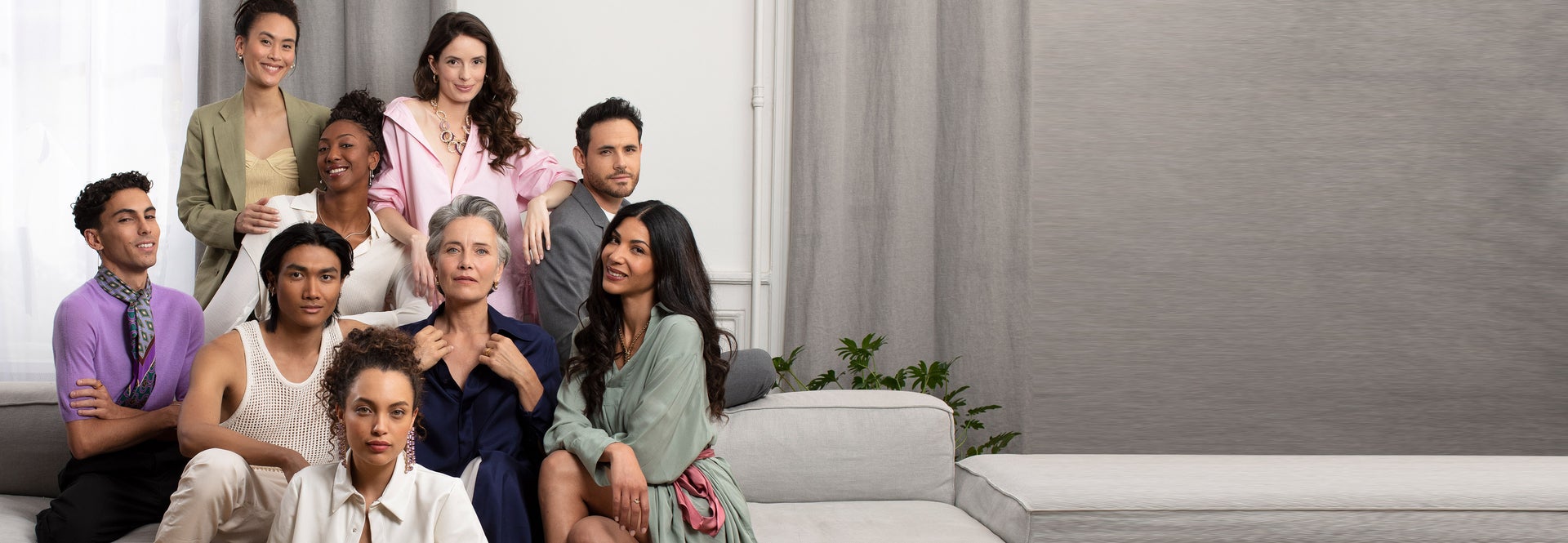Why lift with Restylane®?
Our facial bones give shape and structure to our face. As we age, bone resorption increases, leading to loss of definition and contours, especially at the posterior part of the jawline. Another consequence of aging is volume loss in the mid face, which could lead to flat cheeks, saggy skin and jowling. Creating a lift with Restylane® will compensate for these changes. Another reason for lift with Restylane® could be that you have a desire to enhance your facial features and bring out your individuality, no matter your age.
Restylane® Defyne™ and Restylane® Lyft™ can be tailored to any individual look to give you the freedom to be original. Restylane® Lyft™ is our firmest dermal filler and is suited for lifting the cheeks, enhancing the jawline, or reducing the appearance of wrinkles2. If you have a thinner tissue coverage, Restylane® Defyne™ could be preferred as it is slightly softer and more flexible.
Treatment with Restylane® Defyne™ and Restylane® Lyft™ have been shown to have long-lasting results.

Restylane® treatment areas
Restylane® Defyne™ and Restylane® Lyft™ are dermal fillers treatments used to lift and project for precise results.
“I have patients that look the same or better now than they did 15 years ago.” Steven Weiner, Plastic Surgeon, USA

Restylane® treatment areas
Restylane® Defyne™ and Restylane® Lyft™ are dermal fillers treatments used to lift and project for precise results.
“I have patients that look the same or better now than they did 15 years ago.” Steven Weiner, Plastic Surgeon, USA
Your Restylane® treatment
A treatment with Restylane® takes approximately 15-45 minutes, depending on the treatment area. Sometimes, you might need a touch-up treatment about two weeks after the initial treatment to optimize your results. Restylane® fillers contain lidocaine, a local anaesthetic, that removes most discomfort during treatment.
Immediately after your dermal filler treatment, you may experience some post-treatment side effects, such as redness, swelling, pain, bruising or tenderness at the treatment site. These side effects usually disappear within one week after injection. Though fillers are minimally invasive, they still carry some risks. Before the treatment, discuss all possible risks and benefits with your healthcare practitioner. View Important Safety Information.
Restylane® gives you long-lasting but non-permanent results, meaning you can continuously refine your looks.

How it works
Hyaluronic acid is a substance that has a unique ability to bind water. Hyaluronic acid occurs naturally in our bodies and in all layers of our skin. It keeps our body tissues soft, hydrated, and flexible. However, as we age, the body’s ability to produce hyaluronic acid lessens, leading to dry, thinner skin and loss of youthful volume.
Natural hyaluronic acid in the body degrades quickly, in one to two days. To make the hyaluronic acid in Restylane® Defyne™ and Restylane® Lyft™ last longer, Galderma has used stabilization technologies that delay degradation. Restylane® Defyne™ and Restylane® Lyft™ contain hyaluronic acid gels that provide support to maintain structure and projection.
Upon its launch in 1996, Restylane® was the first ever non-animal stabilized hyaluronic acid filler. Restylane® has become the gold standard of dermal filler treatments.

Before & After
































- Multiple treatments and/or products may have been used
- Individual results may vary
- Consult your doctor to determine what treatment is best for you


- Multiple treatments and/or products may have been used
- Individual results may vary
- Consult your doctor to determine what treatment is best for you


- Multiple treatments and/or products may have been used
- Individual results may vary
- Consult your doctor to determine what treatment is best for you


- Multiple treatments and/or products may have been used
- Individual results may vary
- Consult your doctor to determine what treatment is best for you


- Multiple treatments and/or products may have been used
- Individual results may vary
- Consult your doctor to determine what treatment is best for you


- Multiple treatments and/or products may have been used
- Individual results may vary
- Consult your doctor to determine what treatment is best for you


- Multiple treatments and/or products may have been used
- Individual results may vary
- Consult your doctor to determine what treatment is best for you


- Multiple treatments and/or products may have been used
- Individual results may vary
- Consult your doctor to determine what treatment is best for you


- Multiple treatments and/or products may have been used
- Individual results may vary
- Consult your doctor to determine what treatment is best for you


- Multiple treatments and/or products may have been used
- Individual results may vary
- Consult your doctor to determine what treatment is best for you


- Multiple treatments and/or products may have been used
- Individual results may vary
- Consult your doctor to determine what treatment is best for you


- Multiple treatments and/or products may have been used
- Individual results may vary
- Consult your doctor to determine what treatment is best for you


- Multiple treatments and/or products may have been used
- Individual results may vary
- Consult your doctor to determine what treatment is best for you


- Multiple treatments and/or products may have been used
- Individual results may vary
- Consult your doctor to determine what treatment is best for you


- Multiple treatments and/or products may have been used
- Individual results may vary
- Consult your doctor to determine what treatment is best for you
96%
of patients thought Restylane® Lyft™ met or exceeded expectations6
9 out of 10
patients would have Restylane® Defyne™ again7
proven aesthetic results with Restylane® since
1996
Frequently asked questions
How long do the effects of the treatment last?
Results vary from patient to patient. With a repeated treatment plan, results may be long-lasting. Results may vary depending on the treatment area and individual patient. As Restylane® is a non-permanent injectable hyaluronic acid product, the effect gradually diminishes with time.
What is a top-up treatment?
A top-up treatment is one or more additional treatment after your initial session to help maintain your results. Talk to your healthcare professional to see if a top-up treatment is right for you, and when and how much Restylane® may be needed.
What should I apply or avoid after the treatment?
• Avoid applying make-up to the skin immediately after treatment.
• Light cover up may be used to conceal any remaining redness after approximately 24 hours.
• A yellow-toned concealer may be used to hide signs of bruising.
• In order to cover up any redness, a concealer with a slight green/yellow tone is recommended.
What are the possible side effects?
The most common side effects include treatment site reactions such as swelling, bruising, redness, pain and tenderness. These side effects generally disappear within one week after injection. Other potential side effects can occur with dermal filler injections. You should discuss the potential treatment risks with your healthcare practitioner. View Important Safety Information.
Who manufactures Restylane® filler products?
Restylane® is manufactured by Q-Med, a Swedish division of Galderma. Galderma is a pharmaceutical company with over 6,000 employees worldwide. The company specializes in dermatology and is present in more than 100 countries. To read more about Galderma visit About Galderma.
Skin insights
Our portfolio of products
Galderma has developed a diverse portfolio of products that work together.
References
- Data on file (MA-39364).; Weiss RA et al. Dermatol Surg 2016;42:699–709.; Narins RS et al. Dermatol Surg 2011;37:644–650.
- Kablik J et al. Dermatol Surg 2009;35(Suppl1):302–312.; Weiss RA et al. Dermatol Surg 2016;42:699–709.; Narins RS et al. Dermatol Surg 2011;37:644–650.
- Ascher B et al. Dermatol Surg 2017;43:389–395.
- Data on file (MA-39364).
- Ascher B et al. Dermatol Surg 2017;43:389–395.; Data on file (MA-39364).
- Data on file (MA-39364).
- Cartier et al. J Drugs Dermatol. 2012 Jan;11(1 Suppl):s17-26; 2015;41:1361–1369.



